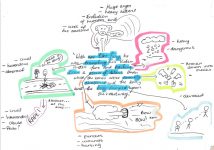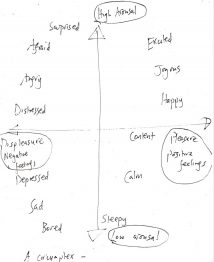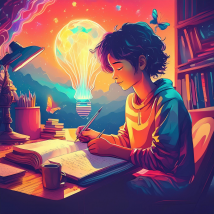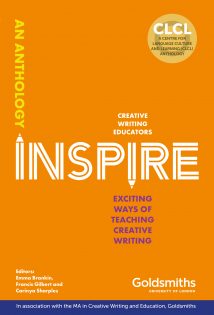Creative Writing Teaching
My focus here is on communicating how to teach creative writing in imaginative, practical and socially just ways. I place particular emphasis upon helping people of all ages and backgrounds write stories, poems, plays and creative non-fiction, including memoir and autobiography.
-
Diagrarting: theorising and practising new ways of writing and drawing
To “diagrart” (my neologism combining the words diagrams, dialogue and art), one must write and draw, and believe you are creating art, no matter how crude you think your work to be.
-
Letting it all spill out: the benefits of venting for creative writing teachers and students.
Specific therapeutic pedagogies that help people ‘vent’ their traumas and issues, with lots of practical suggestions and a rationale for ‘letting it all spill out’ in educational settings.
-
What’s Next? Ecoliteracies and creative writing
Creative writing can be used to nurture ecoliteracie, helping people developing an organic, ecological view of language.
-
Teaching Creative Writing Online: Research-Informed Strategies
A summary of a presentation at NAWE Conference 2021, suggesting some ways of teaching creative writing online, using puppets, stories, drawings and metacognition.
-
Why teach creative writing? Examining the challenges of its pedagogies
One of the purposes of teaching creative writing is ‘to heal’, in other words, creative writing is taught as a form of therapy, maybe more than is openly stated. Many teachers set therapeutic tasks so the author can learn and grow from the experience of writing about it.
-
Lockdown lessons: Teaching and working during the Covid-19 crisis
Some of the lessons I learnt during the Covid lockdown, about staying sane, being mindful and engaging with technology
-
Finding a new path: Building affective online learning spaces for creative writing and arts practice
On Covid-19 related research, for the British Educational Research Association.
-
The Creative Writing Teacher’s Toolkit
There are certain pedagogical strategies, such as encouraging freewriting, using prompts and fostering flow which can significantly help learners to write creatively.
-
Inspire: Exciting Ways of Teaching Creative Writing
An anthology written by creative teachers with diverse experience. The focus is on how to teach creative writing in imaginative, practical and socially just ways, helping people of all ages and backgrounds to write.









